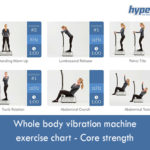
Hypothyroidism affects 5.4 of every 1000 Australians, being one of the most common endocrine disorders in our country and worldwide.
Although in most cases the trigger of this condition is iodine deficiency, in Australia the most common etiology is autoimmune chronic lymphocytic thyroiditis or Hashimoto’s disease, condition characterized by an enlargement of the thyroid gland and symptoms like fatigue, pale or puffy face, weight gain, joint and muscle pain, cold limbs or depression.
More common in women than in men, Hashimoto’s disease and thyroid disorder implicitly can occur at any age, but it’s more frequent in the middle aged individuals and young women.
The thyroid gland is responsible for the production of hormones involved in metabolic processes like energy expenditure or growth. TSH, the thyroid stimulating hormone, is released by the pituitary gland, and prompts the thyroid to produce other hormones, of which the most known ones are thyroxine (T4) and tri-iodothyronine (T3).
T4 is produced in higher amounts, but T3 is more active and is the hormone responsible for increasing the metabolic rate. Part of the T4 hormones are converted to T3 inside the body, but in certain conditions the levels of these hormones can be disrupted and hypothyroidism or hyperthyroidism can occur. T3 controls the body temperature and heart rate, while T4 is mostly involved in metabolism and growth.
Several factors can lead to an altered production of these hormones or to an abnormal conversion of T4 to T3, but the most common causes of hypothyroidism include an insufficient intake of dietary iodine, the autoimmune disorder called Hashimoto’s disease, in which the body’s antibodies attack and destroy the healthy cells of the thyroid gland, as well as dysfunctions of the pituitary gland or of the hypothalamus, these causing an altered production of TSH and thyroid hormones.
Other potential triggers for hypothyroidism include surgery, radiation treatments and certain medications, among which beta blockers and birth control pills. People with hyperthyroidism that follow drug-based treatments might also develop hypothyroidism and those with congenital defects of the thyroid are more likely to have an underactive gland.
When the thyroid gland becomes underactive, the production of hormones decreases therefore the levels of these substances into the bloodstream decrease. This slows down the metabolic processes, and although the symptoms may vary from one person to another, there are some common signs that can signal a thyroid disorder and a lower than normal production of T3 and T4.
Depending on the severity of the deficiency, the signs can develop faster or slower, and in lots of people the manifestations are either vague or mimic other conditions. In some, the disorder evolves fast, while in others it can take several months for the symptoms to become visible and disturbing enough to determine one to see a physician.
Still, a red flag can be a sudden weight gain and a continuous feeling of fatigue. These are the most common symptoms of hypothyroidism, and although lots of sufferers associate them with aging or stress, if the manifestations are accompanied by other signs such as muscle weakness, sensitivity to cold, skin dryness, pain and swelling of the joints or slowed heart rate, they might signal an underactive thyroid.
Hypothyroidism manifestations also include constipation, water retention especially in the face area, muscle tenderness or stiffness, moodiness and depression, heavy periods, elevated cholesterol levels, memory problems, thin hair, the swelling of the thyroid gland and carpal tunnel syndrome.
The good news is that hypothyroidism can be prevented and treated, iodine supplementation being in lots of cases the best remedy for this problem. Here are some diet recommendations for hypothyroidism sufferers. If you have other suggestions or want to add something to this article, we welcome your comments below or on our Facebook page!

Updated on: 08.09.2021 The lymphatic system is involved not only...

Stress can make you gain weight – we’ve heard this...

Various theories exist to answer this question. As you will...

Our series of whole body vibration machine exercise articles continues...

Both rebounding and jumping on a trampoline are excellent ways...